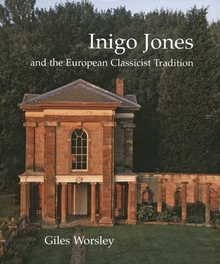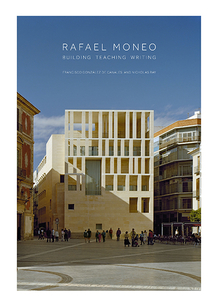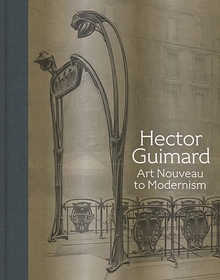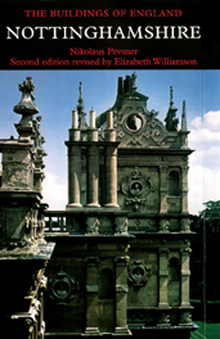Inigo Jones and the European Classicist Tradition
WARNING
You are viewing an older version of the Yalebooks website. Please visit out new website with more updated information and a better user experience: https://www.yalebooks.com
Giles Worsley
In this groundbreaking volume, conventional assumptions about one of England’s greatest and most influential classical architects are turned on their head. Traditionally, Inigo Jones has been looked upon as an isolated, even old-fashioned, figure in European architecture, still espousing the Palladian ideals of the 16th century when European contemporaries were turning to the Baroque. Yet an investigation of contemporary European architecture and of Jones’s buildings belies this impression, demonstrating that Jones must be viewed in the context of a European-wide, early-17th-century classicist movement.
Giles Worsley examines the full range of Jones’s architecture, from humble stable to royal palace. Worsley shows that key motifs that have been seen as proof of Jones’s Palladian loyalties—particularly the Serliana, the portico, and the centrally planned villa—have a much older and deeper meaning as symbols of sovereignty. The book transforms our understanding not only of Inigo Jones but also of the architecture of his time.
Published for the Paul Mellon Centre for Studies in British Art.
Giles Worsley examines the full range of Jones’s architecture, from humble stable to royal palace. Worsley shows that key motifs that have been seen as proof of Jones’s Palladian loyalties—particularly the Serliana, the portico, and the centrally planned villa—have a much older and deeper meaning as symbols of sovereignty. The book transforms our understanding not only of Inigo Jones but also of the architecture of his time.
Published for the Paul Mellon Centre for Studies in British Art.
Published for the Paul Mellon Centre for Studies in British Art
Giles Worsley was senior research fellow, Institute of Historical Research, University of London, and architecture critic of the Daily Telegraph. He was the author of Classical Architecture in Britain: The Heroic Age, published by Yale University Press.
"For the many who knew and admired him, Giles Worsley's huge intelligence and capacity for invention, as well as his dynamism and charm, live and breathe on every page of this brilliant work."---David Watkin, Literary Review
"We all knew Worsley was good: I'm not sure I appreciated just what an accomplished scholar he was. This biography makes it abundantly clear."---Hugh Pearman, The Sunday Times 'Culture'
"In this ambitious book, and in his typically well-argued manner, Dr. Worsley has created a veritable march through Jones's career...Anyone who has an interest in the Classical tradition of architecture, or the history of England in the 17th century -- a period which defined so many of our national institutions -- should read this thoughtful and well-argued study."---Jeremy Musson, Country Life
"This book is a remarkable contribution to architectural history based on wide scholarship, impeccably organised and beautifully written...[it] is an important addition to the literature of Inigo Jones, and is also an appropriate monument to its author."---John Martin Robinson, The Spectator
"Inigo Jones and the European Classicist Tradition is a must for anyone with more than a passing interest in English architectural history, not least because Worsley resurrects Jones from neo-Palladian has-been to cast him as a key figure in the development of a contemporary European classicism. A wealth of written and illustrative documentation lends weight to Worsley's compelling argument, the culmination of which is a reading of the largely unbuilt scheme for Whitehall Palace as a political project."---Architecture Today
"Worsley liked a good argument, and in this masterly book he fairly lets rip. Conventionally, Jones has been depicted as a meteor, trailing light but blazing a lonely path across the Stuart sky. Worsley does not dispute the dazzling impact he must have made; but shows he was not so isolated as we thought."---Clive Aslet, The Daily Telegraph
"By taking a holistic view of the architectural scene, and releasing himself from the shackles of referring only to written documentary evidence, Worsley has been able to develop a much richer and more credible picture of the context and influences on Jones's architecture. Given the loss of so much of Jones's written archive, this is investigative architectural history at its best."---Ptolemy Dean, Building Design
"Giles Worsley breaks new ground by considering Jones in his European context."---Kerry Downes, Times Literary Supplement
"This is exemplary architectural history -- shot through with insight, a sharp eye for the unexpected or overlooked detail and an eagerness to re-examine evidence."---Gillian Darley, Cornerstone
"...vastly informative, engaging and full of persuasive enthusiasm." --- Neil Cameron, Architect's Journal
‘The European sweep of the book is as impressive and valuable as it’s concentration on Jones: we see both the European classicist tradition, and Jones in a new light. Worsley has introduced us to the unknown, and has enriched the familiar. We are the poorer for no longer being able to argue and develop the ideas stimulated by this book with a scholar as original and cosmopolitan as Giles’---Edward McParland, Apollo Magazine
"Worsley . . . provides detailed studies of Jones' experiences, particularly in Italy, Germany, and Provence. The main thrust is a thorough study of Jones's absorption of the styles of Palladio, Scamozzi, Serlio, and Antiquity. . . . His work is a monument ot his great talent. Highly recommended."—Choice
“…wide-ranging … fascinating … Worsley takes us on a journey past Inigo Jones’s architecture, opening our eyes to new possibilities of interpretation and appreciation. The journey is made even more enjoyable by the excellent design and illustration of this volume. How sad it is that it is the last contribution to the debate that we shall enjoy from Giles Worsley’s fertile mind.” - Claire Gapper, Transactions of the Ancient Monuments Society, Vol. 52
Short-listed for the 2008 William M. B. Berger Prize for British Art History sponsored by the Berger Collection Educational Trust and The British Art Journal.
ISBN: 9780300117295
Publication Date: May 28, 2007
Publishing Partner: Published for the Paul Mellon Centre for Studies in British Art
Publication Date: May 28, 2007
Publishing Partner: Published for the Paul Mellon Centre for Studies in British Art
240 pages, 280 x 220
80 b/w + 120 color illus.
80 b/w + 120 color illus.








